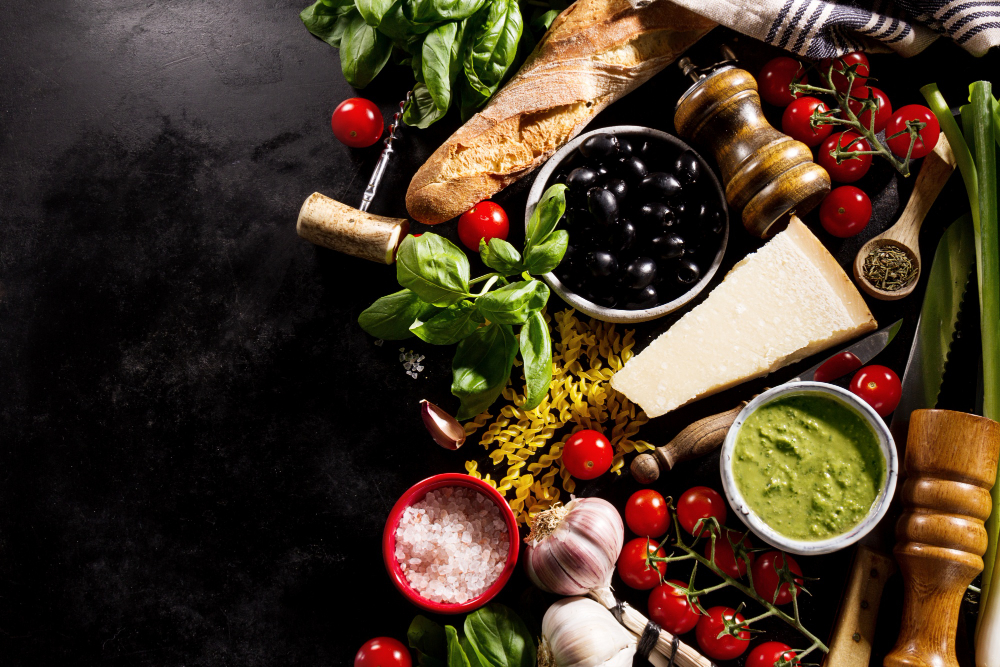Mediterranean cuisine contains some of the world’s most beloved and well-known dishes. Many people believe that this diverse meal contains the key to living a healthy existence.
Many people are unfamiliar with the location, history, and recipes of Mediterranean cuisine. If you’re interested in knowing more, you’ve come to the right place.
What exactly is Mediterranean food?
Simply described, Mediterranean cuisine is derived from the nations and places that surround the Mediterranean Sea.
The Mediterranean region is now recognised to include 23 nations. The Mediterranean diet benefits from a variety of cuisines and cooking styles.
Where can I get Mediterranean food?
Mediterranean cuisine can be split into three categories. These are:
Mediterranean, Eastern Europe, South Africa, and North Africa
Naturally, all three have a strong influence on one another. However, due to the different climates and cultures in each location, distinct yet similar cuisines have emerged across the board.
The majority of Eastern Mediterranean cuisine comes from the Balkans, Greece, Turkey, Syria, Lebanon, Israel, Palestine, and Egypt.
Southern Europe’s cuisines include Italian, Spanish, Portuguese, and Southern French.
Moroccan, Algerian, Tunisian, and Libyan cuisines have had a significant influence on Mediterranean cuisine.
Important Mediterranean food ingredients
Mediterranean food features fresh vegetables, tender meats, and a range of spices.
Nonetheless, experts have identified three fundamental ingredients—olives, wheat, and grapes—on which all of the various regions’ culinary traditions are fundamentally based.
1.Olives
Olive trees have been grown in the Iranian region since ancient times. The Mediterranean region now accounts for an astounding 95% of global olive production.
As a result, olive oil has become synonymous with Mediterranean cuisine and the preferred cooking oil over butter, fats, and other oils.
2 – Wheat
Wheat agriculture has been known for roughly 10,000 years in the Eastern Mediterranean region.
This explains why bread is such an important part of Mediterranean cooking, giving rise to other wheat-based foods such as Italian pasta.
3- Grapes
Finally, grapes are the reason wine is beloved in many Mediterranean countries.
Persia’s proximity to the Black Sea gives a perfect climate for grape growth. According to the data, there may have been a vineyard there for at least 8000 years.
The Top 5 Mediterranean Foods
1 – Pita
Because of its puffy texture and soothing flavour, pita is one of the world’s most well-known and adored breads.
This spherical flatbread made of wheat flour has long been used to enfold pleasures in the Middle East.
Pita has evolved over time from some of the earliest flatbreads documented, dating back 15,000 years.
It is a product of the Fertile Crescent, a Middle Eastern region stretching from northern Egypt to the Persian Gulf.
However, it was the Greeks who popularised pita. The term “pita” originally appeared in English in the 1930s.
2.Moussaka
Few Mediterranean dishes ease the stomach as much as a delightful moussaka, which is rich and flavorful.
This baked aubergine and minced pig stew became famous in the 1920s thanks to Greek cuisine.
Nonetheless, it has much older roots that can be traced back to the Levant. Turkey, Lebanon, and Israel are among the countries located to the east of the Mediterranean Sea.
The traditional meal mixes the juiciness of sautéed eggplant and luscious tomatoes with minced lamb.
Nikolaos Tselementes, a Greek chef with French training, is credited with making moussaka one of the country’s most well-known dishes.
3.Greek Salad
Several delicious and ripe fruits and vegetables can only be grown in the Mediterranean region.
Simply walking through a Greek, Turkish, or Italian food market will astound you with the abundance and vibrancy of the fruits and vegetables.
In the scorching heat, a cold, refreshing salad is typically the order of the day.
Greek salad is supposed to have developed when farmers in rural areas used what they had on hand to make a quick supper.
Chopped tomatoes, cucumbers, bell peppers, and olives, fresh from the ground or markets, are the basics of the Greek salad.
4. Baklava
Baklava is a multi-textured pastry that developed in Turkey during the Ottoman Empire’s reign. It’s quite lovely.
Filo pastry is sandwiched between crushed nut layers, which are held together with sweet honey syrup.
Baklava’s pastry layers are flaky and buttery. The crunch and the rich, sweet feel of the honey combine to create a delicious bite.
Pistachios and walnuts are the most popular nuts in Turkey and Greece, respectively. Other nuts, however, have been ground and utilised in Baklava recipes.
When served cold on a warm Mediterranean evening, it’s the perfect piece of heaven to eat after dinner.
5. Dolmas
The dolma is a very important family of Mediterranean cuisines. Throughout history, vegetables have frequently been packed with hefty recipes.
Dolmas are believed to have originated in the Middle East. Arabic cookbooks offered stuffed vegetable recipes well before the Ottoman Empire.
Dolmas is observed in a variety of ways throughout the East Mediterranean and Middle Eastern countries.
In Turkey, you can get vivid roasted eggplant packed with substantial, spice-rich rice and ground lamb.
If you travel to the Balkans to the north, you can find sogan dolmasi.
Rice, beef mince, salt and pepper to taste, and sour cream are all placed inside peeled onions in this recipe.
Have you enjoyed our Mediterranean food tour? If you are planning a trip to Abu Dhabi, make sure to stop by Penelope’s. They offer authentic Mediterranean Food in Abu Dhabi.




